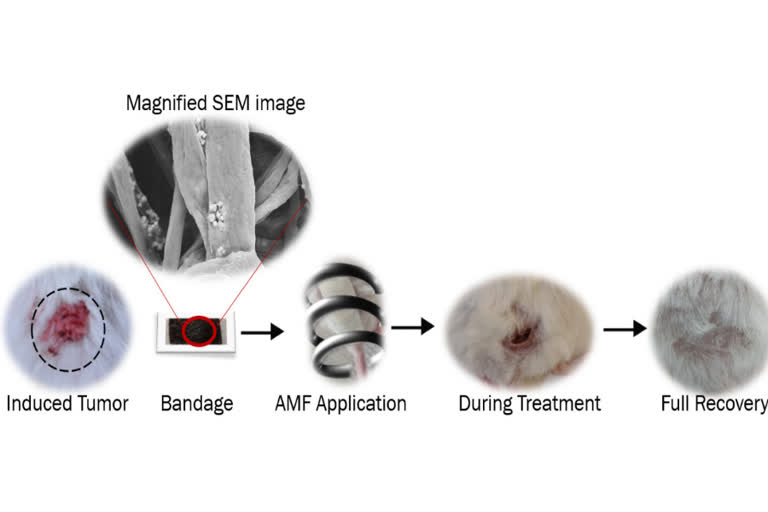IISC Bangalore: Skin cancer, the most common kind of cancer, is caused mainly due to excessive exposure to ultraviolet rays from the sun. There are two types: melanoma, which develops from pigment-producing cells in the skin called melanocytes, and non-melanoma, which develops from other skin cells. Though non-melanoma skin cancer is more widespread, melanoma is malignant and has a higher mortality rate.
Common treatments for skin cancer include; surgery, radiation therapy, and chemotherapy. But these treatments and other conventional therapies have limitations. A promising alternative that has emerged to treat skin cancer is hyperthermia, which involves applying heat to the affected tissues. In recent years, researchers have been working on developing ways of delivering heat to the tumour tissues so that cancer cells are targeted selectively and effectively.
Also Read: Shark-free COVID-19 vaccine petition makes waves, gains more online support
One such technology is called magnetic hyperthermia, in which magnetic nanoparticles are used to heat the tumours by using an external alternating current magnetic field (AMF). But it is difficult to achieve uniform heating of the affected tissues using such magnetic nanoparticles because of uncontrolled aggregation. Besides, they can accumulate in the human body and induce toxicity.
Now, researchers from the Centre for BioSystems Science and Engineering (BSSE) and the Department of Molecular Reproduction, Development and Genetics (MRDG) at IISc have developed a bandage with a unique blend of magnetic nanoparticles fabricated using a method called electrospinning. It comprises nanoparticles made from an oxide of iron, Fe3O4, and a biodegradable polymer called polycaprolactone (PCL) pasted on surgical tape. The magnetic material generates heat when it is subjected to a high-frequency oscillating magnetic field.
Also Read: How our brains make us
In order to investigate whether the heat generated and dissipated by the magnetic bandage can treat skin cancer, the researchers did two experiments: one was in vitro – on human cancer cell lines – and the other was in vivo – on mice with artificially-induced skin cancer. “The protocol used to prepare the PCL-Fe3O4 fibrous mat-based bandage took a little more than two months to optimise; however, the in vitro and in vivo tests that involved the testing of the magnetic thermal therapy took quite some time to optimise.
In both experiments, the heat generated by applying AMF to the nanofibrous magnetic bandage killed the cancer cells successfully. Though this novel treatment has been shown to be effective against skin cancer in lab experiments, it is still at a nascent stage of development as a clinical therapy.
Also Read: Novel testing platform designed for breast cancer cells
( IISc press release)



